September is “Ovarian Cancer Awareness” month. Ovarian Cancer is the fifth leading cause of cancer death among American women.


September is “Ovarian Cancer Awareness” month. Ovarian Cancer is the fifth leading cause of cancer death among American women.
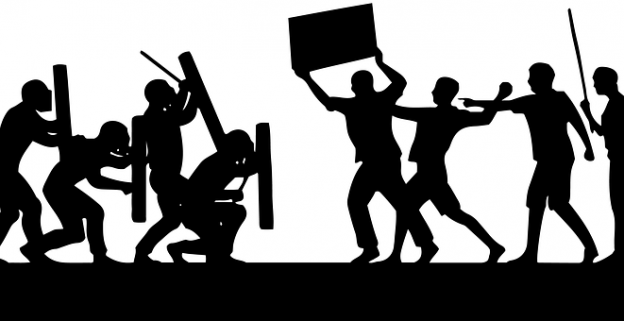
Americans are stunned at recent developments, including the takeover of major campuses by terrorist sympathizers, the Biden Administration’s use of the Justice Department to attack political opponents, and the media’s abandonment of journalistic ethics. How did this come about?
For too long, our nation has been subjected to a forced deterioration by a collection of elitest politicians, biased media kingpins and self-proclaimed intellectuals who clearly despise much of what America is and much of what it stands for.
America brought about the greatest advance in freedom in history. Our Constitution has been a light to the entire planet. The USA is responsible for bringing more prosperity to more people than has ever occurred before. We have saved the world from Fascism, Nazism (shorthand for “National Socialism,”) and Communism. We have demonstrated that people of different nationalities, races and creeds could live together in harmony. Our science and economics have transformed the world into a far better place.
Those who hate the idea of individual rights seek to reverse those advances. They maintain that because we have, at times, been subjected to the same failings that all mankind shares, we should be knocked down, ignoring the reality that we have recognized those failings and reversed them, even as other parts of the globe have not.
In their desperate bid to divide and reduce America, there is no lie and no tactic they will not engage in. They seek to split us apart in any way possible. They will tell you that police are evil, while setting criminals free. They state that they can’t define what a woman is, and destroy decades of advances in female rights while labelling rationale individuals who oppose that nonsense that they are somehow biased. They abuse the courts for partisan purposes.
They have, unfortunately, made great advances in their despicable goal of replacing personal freedom with the totalitarianism of socialism, a philosophy which essentially states that you are too ignorant and unworthy to run your own life.
They have misused school funds to replace education with leftist indoctrination. They will openly lie in a corrupted and biased media. They will use false and unsubstantiated scientific data to persuade you that unless you give them the power to bring the entire economy under their thumb, the world will burn (after telling you several decades ago that it was about to freeze.) They will tell you that dramatic price increases, the direct result of their absurd economic and energy policies, were inevitable.
Because they feel more comfortable with dictatorships than with democracies, they have refused to enforce sanctions against nations such as Iran. Those protests on the streets against Israel and muddled White House statements are all about that. They will cozy up and personally get rich from China while telling you there is nothing to worry about when the President and other top politicians sell their influence, allowing jobs to go overseas while underfunding our military. They will try to convince you that allowing clear, present and immediate threats such as Chinese surveillance balloons over the nation are OK. They overlook stunning increases in enemy military power so they can continue to funnel funds to their friends through various federal programs.
They spend tax dollars on programs that accomplish little, other than buying votes for themselves and spreading your money to their donors.
They will tell you that those who work with their hands must pay the college tuition of others, furthering the transfer of dollars to universities that spread their propaganda.
They will try to convince you that censorship is acceptable, under the guise of preventing “disinformation.”
They produce schemes to end the American way of life, forcing you out of home ownership with outrageous taxes, and out of your car with ever-increasing fees, gas prices, tolls, and more.
They will use every election scheme imaginable, including ballot harvesting, opposing voter ID, “ranked choice voting,” absurdly faulty voter registration rolls, and others, to get their way. They will drum up bogus charges to handicap candidates they oppose, while allowing real offenses by their candidates to go unpunished and unpublished.
Because so many citizens have refused to succumb to their assaults on freedom, they have allowed and encouraged vast millions with no affinity to our Constitution to illegally enter the nation.
Their ultimate success is not inevitable. Understanding what they have done to assault freedom, and their determination to end the American way of life, is crucial to defeating this greatest threat to our nation that has ever existed.

The question of whether there will be cheating in the 2024 presidential election can now be answered affirmatively. Much of the problem rests in the issue of illegal aliens voting in potentially significant numbers.
Observers have long speculated on why Democrats so stringently opposed measures to secure the U.S. southern border, despite the pleas of even their own fellow party members. As noted by the Center for Immigration Studies “On January 11, Rep. Nathaniel Moran (R-Texas) introduced H. Res. 957—”Denouncing the Biden administration’s open-borders policies, condemning the national security and public safety crisis along the southwest border, and urging President Biden to end his administration’s open-borders policies”. That non-binding resolution isn’t exceptional, but what is out of the ordinary is that on the evening of January 17, 14 House Democrats (Reps. Colin Z. Allred (Texas); Yadira Caraveo (Colo.); Angie Craig (Minn.); Donald G. Davis (N.C.); Jared F. Golden (Maine); Vicente Gonzalez (Texas); Greg Landsman (Ohio); Susie Lee (Nev.); Jared Moskowitz (Fla.); Wiley Nickel (N.C.); Mary Sattler Peltola (Alaska); Marie Gluesenkamp Perez (Wash.); Eric Sorensen (Ill.); and Henry Cuellar (Texas)) voted with 211 of their GOP colleagues to pass it.”
While not openly confronting the Biden-Harris Administration, a number of big city mayors have also complained of the detrimental impact open borders has had on their jurisdictions.
Despite widespread opposition, the White House continued its border policy. The reason is evident: bringing in a population dependent on Democratic largess, and obviously grateful to the current Administration, could turn the political tide in favor of that party. It’s happening far more rapidly than previously believed.
The acceleration is due to tough opposition to voter ID laws, as well as other measures geared towards stopping ballot security. Even in GOP-leaning states, a comparatively small number of votes, coming illegally from non-citizens, could turn the tide in favor of the Democrats.
Most voters don’t believe state officials have done enough to prevent voting by illegal immigrants or to stop outside groups from interfering in elections.
The public has been paying attention. A Rasmussen survey in late August found that “that 32% of Likely U.S. Voters say election officials in their state have done nothing to prevent voting by illegal immigrants or haven’t mentioned it, while 20% say officials have announced some steps but they are not sufficient. Eighteen percent (18%) say election officials have announced steps that sound effective in addressing the threat of illegal immigrants voting, and eight percent (8%) say officials have outlined a detailed plan and it sounds effective. Twenty-one percent (21%) are not sure.”
Democratic party leaders haven’t been shy about their advocacy to rapidly allow illegal aliens to vote. Former House Speaker Nancy Pelosi, appearing on Bill Maher’s program, advocated quickly turning these unlawful arrivals into citizens. California’s Democratic Party is so intent on allowing illegals to vote that its super-majority in the state legislature voted for a bill that would prohibit local governments from seeking to apply common-sense voter ID.
Democratic judges have even ignored voter demands for ballot security measures that would inhibit questionable voting practices. As noted by the New York Post “So much for no means no. That’s the message from the state Court of Appeals, which ruled last week that New Yorkers don’t need an excuse to cast an absentee ballot by mail when they’re otherwise able to vote in person — even though the voters themselves have directly rejected such a measure.”
There is pushback from some states. Texas Attorney General Ken Paxton has opened an investigation into reports that organizations operating in Texas may be unlawfully registering noncitizens to vote in violation of state and federal law.
In a Press Release, Paxton’s office reported that “Investigators from the Texas Attorney General’s Election Integrity Unit recently conducted undercover operations to identify potential voter registration of noncitizens in Texas. The investigation has already confirmed that various nonprofit organizations have been located outside Texas Department of Public Safety Driver License offices, operating booths offering to assist in voter registration for persons doing business at the driver’s license offices. But all citizens have already been presented an opportunity to register to vote as part of the process of renewing or being issued an identification card or driver’s license, so there is no obvious need to assist citizens to register to vote outside DPS offices—calling into question the motives of the nonprofit groups.” The release concluded that “Texans are deeply troubled by the possibility that organizations purporting to assist with voter registration are illegally registering noncitizens to vote in our elections. “
Measures such as ballot dumping in unsecured boxes, registration using drivers licenses issued to illegals, and others could well alter the outcome of the 2024 presidential race.
Photo: Boston ballot drop box
A top aide to NY Governor Hochul has been tied to the China. How deep is the relationship between the Democratic Party and Beijing? NY State Conservative Party Chair Gerard Kassar discusses the issue. Judge John Wilson reviews the collapsing lawfare assault on Donald Trump. If you missed the program on your local station, watch it here https://rumble.com/v5ekkub-the-american-political-zone-september-10-2024.html
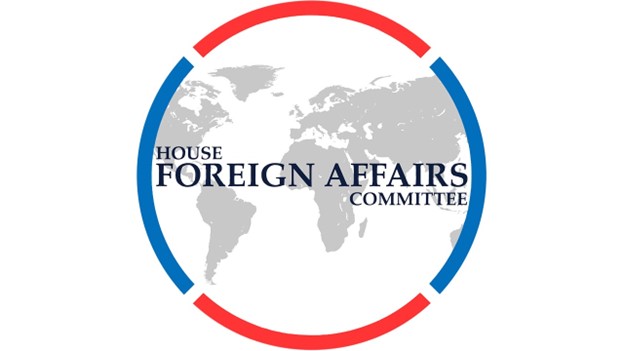
The House Foreign Affairs Committee’s GOP members have issued a stunning report outlining the actions by the Biden Administration that led to the deaths of thirteen American We reproduce key excerpts:
Over the course of three years, House Foreign Affairs Committee Republicans, led by Chairman McCaul, have conducted a thorough investigation into the U.S. withdrawal from Afghanistan… The investigation has revealed five primary conclusions:
1.The Biden-Harris administration was determined to withdraw from Afghanistan, with or without the Doha Agreement and no matter the cost. Accordingly, they ignored the conditions in the Doha Agreement, pleas of the Afghan government, and the objections by our NATO allies, deciding to unilaterally withdraw from the country.
2. The Biden-Harris administration prioritized the optics of the withdrawal over the security of U.S. personnel on the ground. For that reason, they failed to plan for all contingencies, including a noncombatant emergency evacuation (NEO) and refused to order a NEO until after the Taliban had already entered Kabul.
3. The Biden-Harris administration’s failure to prepare for a NEO and order a timely NEO created an unsafe environment at HKIA, exposing U.S. Defense Department and State Department personnel to lethal threats and emotional harm. As a result, 13 U.S. servicemembers were murdered by a terrorist attack on August 26, 2021. It was the deadliest day for the U.S. military in Afghanistan since 2012.
4. In the aftermath of the withdrawal, U.S. national security was degraded as Afghanistan once again became a haven for terrorists, including al Qaeda and ISISK. America’s credibility on the world stage was severely damaged after we abandoned Afghan allies to Taliban reprisal killings — the people of Afghanistan we had promised to protect. And the moral injury to America’s veterans and those still serving remains a stain on this administration’s legacy.
5. The Biden-Harris administration misled and, in some instances, directly lied to the American people at every stage of the withdrawal, from before the go-to-zero order until today. This coverup included mid-level administration officials all the way up to the Oval Office. And as this investigation reveals, the National Security Council and NSA Jake Sullivan were of the source of the majority of that misinformation campaign.
The report presents the findings of the committee majority’s investigation into the BidenHarris administration’s withdrawal from Afghanistan in 2021. The U.S. withdrawal from Afghanistan is understood to encompass the U.S. military retrograde, beginning with the “Go to Zero” order officially announced by President Biden on April 14, 2021, through the noncombatant evacuation operation (NEO) ordered by President Biden on August 15, 2021, as well as related planning by the White House, U.S. Department of State, and other federal agencies and their decision-making processes. The withdrawal culminated in the Abbey Gate terrorist attack on August 26, 2021, which killed 13 U.S. servicemembers, wounding another 45, and killed more than 170 Afghan civilians. The withdrawal concluded on August 30, 2021, when the last U.S. military aircraft left Afghanistan.
Over the course of three years, House Foreign Affairs Committee Republicans, led by Chairman McCaul, have conducted a thorough investigation into the U.S. withdrawal from Afghanistan, pursuant to the outlined methodology. The investigation has revealed five primary conclusions:
The Biden-Harris administration was determined to withdraw from Afghanistan, with or without the Doha Agreement and no matter the cost. Accordingly, they ignored the conditions in the Doha Agreement, pleas of the Afghan government, and the objections by our NATO allies, deciding to unilaterally withdraw from the country. The Biden-Harris administration prioritized the optics of the withdrawal over the security of U.S. personnel on the ground. For that reason, they failed to plan for all contingencies, including a noncombatant emergency evacuation (NEO) and refused to order a NEO until after the Taliban had already entered Kabul. The Biden-Harris administration’s failure to prepare for a NEO and order a timely NEO created an unsafe environment at HKIA, exposing U.S. Defense Department and State Department personnel to lethal threats and emotional harm. As a result, 13 U.S. servicemembers were murdered by a terrorist attack on August 26, 2021. It was the deadliest day for the U.S. military in Afghanistan since 2012. In the aftermath of the withdrawal, U.S. national security was degraded as Afghanistan once again became a haven for terrorists, including al Qaeda and ISISK. America’s credibility on the world stage was severely damaged after we abandoned Afghan allies to Taliban reprisal killings — the people of Afghanistan we had promised to protect. And the moral injury to America’s veterans and those still serving remains a stain on this administration’s legacy. The Biden-Harris administration misled and, in some instances, directly lied to the American people at every stage of the withdrawal, from before the go-to-zero order until today. This coverup included mid-level administration officials all the way up to the Oval Office. And as this investigation reveals, the National Security Council and NSA Jake Sullivan were of the source of the majority of that misinformation campaign.
The investigation upends the Biden-Harris administration’s continued claim that they “planned for all contingencies.” Instead, the State Department and White House’s tunnel vision that U.S. Embassy Kabul remain open resulted in a failure to properly prepare for worst case scenarios, including conducting an evacuation under Taliban rule. When that precise scenario manifested, the Biden-Harris administration was caught flat-footed and chaos ensued.
The failure to plan for all contingencies and order a NEO only after the Taliban seized Kabul directly resulted in chaos reigning at Embassy Kabul and HKIA. Droves of classified documents and systems were left behind, and American and Afghan passports were unnecessarily burned as pandemonium enveloped the embassy compound. One Embassy employee concluded, “We know that some of [the classified documents] are being used by the Taliban. Another Embassy employee explained there was no embassy roster available when it came time to evacuate. As a result, the employee went room to room to clear the embassy compound. Indeed, on the day of the evacuation, some embassy personnel were not even aware the Taliban had marched into Kabul. As consequence of the rapid military retrograde — rendering U.S. troop presence to less than 1,000 — and the failure to plan for a NEO, HKIA was overrun, and the airfield was forced to shut down for 48 hours.
Additional issues cropped up at every step of the way during the evacuation because of the Biden-Harris administration’s failure to plan for a NEO, including, but not limited to: There were insufficient military planes to conduct an airlift of this size, and the U.S. Department of Transportation waited until August 20th — five days after the country fell — to allow foreign civil aircrafts to conduct their own flights. Throughout the NEO, logistics operations responsible for the provision of food, medical support, clean water, vehicles, and other critical supplies did not have more than a one-day supply on hand. U.S. government personnel were at great risk of running out of food and water.
“Lily pads” for evacuees were not secured before the NEO began. It was not until August 19th that all three primary lily pads in Qatar, Bahrain, and Kuwait were operable. This delay resulted in multiple operational pauses of the evacuation, limiting the number of Americans and Afghan allies able to escape. To compensate for the Biden-Harris administration’s failure to plan for the inevitable NEO, volunteer organizations across the country mobilized to assist Americans, green card holders, and Afghan allies escape the Taliban. These groups were made up of veterans, active duty servicemembers, journalists, former government officials, congressional staffers, and in some instances, average Americans with no ties to Afghanistan who wanted to do their part. They worked for free at great expense to themselves — emotionally and financially — to track down evacuees across the country, get them through the Taliban checkpoints in Kabul, and finally on a plane to safety.
To compensate for the Biden-Harris administration’s failure to plan for the inevitable NEO, volunteer organizations across the country mobilized to assist Americans, green card holders, and Afghan allies escape the Taliban. These groups were made up of veterans, active duty servicemembers, journalists, former government officials, congressional staffers, and in some instances, average Americans with no ties to Afghanistan who wanted to do their part. They worked for free at great expense to themselves — emotionally and financially — to track down evacuees across the country, get them through the Taliban checkpoints in Kabul, and finally on a plane to safety.
Abbey Gate Attack
The failure to prepare for a NEO had ramifications not only for Americans and allies in Afghanistan, but U.S. personnel on the ground forced to evacuate desperate civilians in a hostile environment. Those concerns were sidelined by the Biden-Harris administration in favor of optics. Rather than concede their negligence, U.S. servicemembers and foreign service officers were directed to prioritize evacuating as many people as possible, no matter the threat posed to their lives.
Threat stream warnings regarding an attack at HKIA were consistent but vague. As a result, personnel on the ground were aware an attack was likely but could not identify a potential attacker with certainty given the breadth and ambiguity of those alerts. Abbey Gate, in particular, was exposed to multiple threats because it served as a main inroad into HKIA. On August 25th, Major General Chris Donahue selected Abbey Gate as being at highest risk of an attack in an assessment shared with General McKenzie. Despite that knowledge, little was done to reinforce protections around the gate. And ultimately, a decision was made by Brigadier General Farrell Sullivan to keep Abbey Gate open, primarily because British forces were still using the gate to evacuate individuals from Baron Hotel into HKIA. At that point, State Department officials on the ground pulled back its consular officers leaving only the U.S. Marines around when the bomb went off at 5:36:52 PM Kabul time on August 26th.
One hundred and eighty-five people were killed in the attack, including 13 U.S. servicemembers. Their names are: Marine Lance Corporal David L. Espinoza Marine Sergeant Nicole L. Gee Marine Staff Sergeant Darin Taylor Hoover Army Staff Sergeant Ryan Christian Knauss Marine Corporal Hunter Lopez Marine Lance Corporal Rylee J. McCollum Marine Lance Corporal Dylan R. Merola Marine Lance Corporal Kareem M. Nikoui Marine Corporal Daegan W. Page Marine Sergeant Johanny Rosario Pichardo Marine Corporal Humberto A. Sanchez Marine Lance Corporal Jared M. Schmitz Navy Corpsman Maxton W. Soviak Countless people were wounded including 45 U.S. servicemembers. It was the deadliest day in Afghanistan for the U.S. military since 2012.
After the Abbey Gate attack, President Biden and Vice President Harris showed disregard and disrespect toward the Gold Star families of the 13 U.S. servicemembers killed at Abbey Gate, and the servicemembers injured in the attack. Almost immediately after the dignified transfer at Dover Air Base for 11 of the 13 servicemembers, media outlets reported President Biden “checked his watch multiple times” during the event. The White House attempted to deny the allegation, until photos surfaced proving he did. Almost three years later, Ms. Psaki continued to perpetuate the lie that President Biden did not check his watch in her memoir. After media reports debunked her falsehood, she was forced to retract it.
The Fallout
The fallout from the ill-advised withdrawal and ill-prepared NEO created a tidal wave of problems in Afghanistan, the United States, and around the world.
Seven billion dollars of U.S. weapons and up to $57 million in U.S. currency were left behind in Afghanistan for the Taliban to use and profit off of by selling to other terrorist regimes. Despite their claims of amnesty toward former Afghan government officials, the Taliban continue to carry out systematic and brutal reprisal killings. In fact, a NATO report written by the Defence Education Enhancement Programme found the Taliban were using U.S. military biometric devices and databases to hunt down America’s Afghan allies.
The catastrophic withdrawal at the hands of the Biden-Harris administration has created a crisis within the U.S. military and among American veterans. Recruitment and retention within the military are down, with experts pointing to the withdrawal as a significant factor. Servicemembers and veterans are also facing devastating moral injury. Each day, they are forced to reckon with the reality that terrorists they fought against for two decades — who their brothers and sisters died to defeat — are once again in power. They are also forced to stand by while their Afghan allies are trapped in Afghanistan, at the mercy of the Taliban. Scott Mann, the founder of Task Force Pineapple and a Green Beret testified to the committee, “Relinquishing Afghanistan…has become a moral injury on our veterans and military families. A moral injury is an injury to the soul. A violation of what we know to be right by leaders whom we trusted.”
Fears by the military regarding the United States’ limited over-the-horizon capabilities postwithdrawal have also come to fruition. The Biden-Harris administration has not conducted a single strike against ISIS-K since 2021. Meanwhile, according to a March 2024 Washington Institute study, “In the past year, [ISIS-K] has planned twenty-one external plots or attacks in nine countries, compared to eight plots or attacks in the previous year and just three between 2018 and March 2022.” The Biden-Harris administration’s willful blindness has left the United States once again vulnerable to attacks emanating from Afghanistan.
Indeed, on June 11, 2024, the FBI’s Joint Terrorism Task Force arrested eight individuals with ties to ISIS-K who entered the U.S. illegally through the southern border. That same month, the Department of Homeland Security identified over 400 persons of interest from Central Asia who had illegally crossed the U.S. southern border with the help of an ISISrelated smuggling network. Our adversaries, like Russia, China, and Iran, saw weakness during the chaotic and deadly evacuation, emboldening them. Less than one year later, Russia launched a full invasion of Ukraine. Today, Iran’s proxies are conducting a brutal war against our ally Israel, attacking our servicemembers in the region, and threatening global trade in the Red Sea. And China continues to ratchet up aggression in the Indo Pacific, including against Taiwan and the Philippines.

In language which will certainly have repercussions for the New York County case, the Supreme Court states that “[a]llowing prosecutors to ask or suggest that the jury probe official acts for which the President is immune would thus raise a unique risk that the jurors’ deliberations will be prejudiced by their views of the President’s policies and performance while in office. The prosaic tools on which the Government would have courts rely are an inadequate safeguard against the peculiar constitutional concerns implicated in the prosecution of a former President.”
This ruling is not absolute. As is pointed out in a footnote intended to address concerns expressed in the concurring opinion of Justice Coney Barrett, Chief Justice Roberts states that “in a bribery prosecution [for instance], excluding ‘any mention’ of the official act associated with the bribe ‘would hamstring the prosecution’…of course the prosecutor may point to the public record to show the fact that the President performed the official act. And the prosecutor may admit evidence of what the President allegedly demanded, received, accepted, or agreed to receive or accept in return for being influenced in the performance of the act…[w]hat the prosecutor may not do, however, is admit testimony or private records of the President or his advisers probing the official act itself. Allowing that sort of evidence would invite the jury to inspect the President’s motivations for his official actions and to second-guess their propriety.”
In the New York criminal case, Donald Trump was not charged with receiving bribes or any similar wrong doing. He was accused of falsifying his business records in an effort to conceal another crime, which remained unspecified until the time of his trial. Those other crimes were an alleged violation of New York State election law, which was allegedly committed in an effort to violate either federal election law, federal tax law, or to falsify business records (yes, you read that right – Donald Trump allegedly falsified his business records, in an effort to falsify his business records).
As described by CNN, “Trump’s lawyers argued in a 55-page filing that the jury’s guilty verdict should be vacated because the district attorney’s office relied on evidence at trial related to Trump’s official acts as president, which Trump’s lawyers asserted should not have been permitted in light of the Supreme Court’s recent immunity decision….[i]n their filing, Trump’s lawyers pointed to testimony at trial – including from White House officials Hope Hicks and Madeleine Westerhout – they argued should not have come before the jury…'[a]ll of Hicks’s testimony concerning events in 2018, when she was serving as the White House Communications Director, concerned official acts based on {Presidential} authority for which President Trump is entitled to absolute immunity,’ Trump’s attorneys argued. ‘[the Supreme Court’s ruling] specifically forbids prosecutors from offering ‘testimony’ from a President’s ‘advisers’ for the purpose of ‘probing the official act.’” https://www.cnn.com/2024/07/11/politics/trump-new-york-conviction-argument/index.html
The filing by the former President’s defense team also asserts that “Westerhout was forced to testify about national security matters and her work for Trump, calling prosecutors’ questioning ‘invasive…[t]his invasive compelled testimony included information regarding President Trump’s official-capacity ‘work habits,’ ‘preferences,’ ‘relationships and contacts,’ and ‘social media’ practices at the White House,’ Trump’s lawyers argued.”
Most galling to Donald Trump’s lawyers is the fact that Judge Merchan was asked to delay the New York trial until after the Supreme Court had issued its immunity ruling. As CNN reports, [a]t bottom, the ‘pressure campaign’ theory turned on [District Attorney Alvin Bragg’s] efforts to assign a criminal motive to actions that President Trump took in 2018 as the Commander in Chief responsible for the entire Executive Branch,’ his lawyers wrote. The Manhattan district attorney ‘urged this Court to front-run the Supreme Court on a federal constitutional issue with grave implications for the operation of the federal government and the relationships between state and federal officials. The record is clear: [Bragg] was wrong, very wrong.’”
Will these arguments succeed? Will Judge Merchan reverse Donald Trump’s conviction?
Judge Merchan did delay the former President’s sentencing while he considers the motion to dismiss. But if we are to predict Judge Merchan’s actions in the future, we should be guided by his actions in the past. By this measurement, I don’t recommend holding your breath while you wait for justice from this judge.
To continue with the blunt analysis I provided to Congress regarding Judge Juan Merchan’ s conduct of the trial of Donald Trump, this court has taken every opportunity possible to violate the former President’s rights. Instead of dismissing a legally insufficient indictment, that failed to apprise Donald Trump of all the crimes with which he was charged, Judge Merchan allowed the prosecution to add additional charges during trial, and then instructed the jury that they did not have to return a unanimous verdict regarding those added charges.
Judge Merchan repeatedly allowed prejudicial testimony to be entered into evidence against Donald Trump (who could forget the titillating, and entirely irrelevant testimony of Stormy Daniels), and prevented the former President from testifying in his own behalf, by allowing prosecutors to use the civil verdicts and penalties assessed against Donald Trump, were the former President to have testified.
Further, Judge Merchan did not recuse himself from hearing the case, despite having displayed his bias against the former President by making contributions to the Biden campaign and to anti-Republican organizations. He then compounded this error by staying on the case, even after it was revealed that his daughter was profiting from the trial by raising money for Democrat candidates.
Now we have evidence that Judge Merchan allowed testimony regarding Donald Trump’s official acts as President, acts which enjoy absolute immunity and which cannot be used against him, or even be entered into evidence in a criminal trial, a situation which could have been avoided had Judge Merchan delayed the trial until he’d received the guidance of the US Supreme Court.
Knowing that Judge Juan Merchan committed the errors I outline above during trial, I believe he will find a way to justify his actions once again, and let stand the unlawful conviction of former President Donald Trump.
Don’t look for justice from Judge Juan Merchan. Instead, continue to expect a reversal of Donald Trump’s illegal conviction from the New York State Court of Appeals.
Judge John H. Wilson served on the bench in NYC
Photo: Pixabay
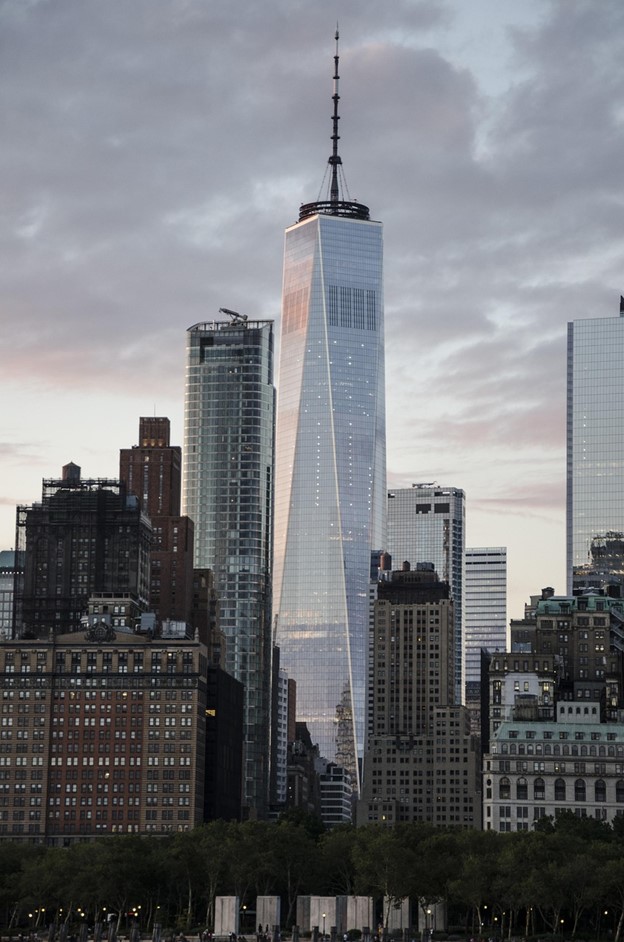
In Trump v. United States, the US Supreme Court set up a three tiered system for examining claims of Presidential immunity. The first tier are acts within the President’s constitutionally mandated authority which are subject to “absolute immunity.” The next are acts that may have “presumptive immunity,” and are subject to examination with evidence that rebuts the presumption of immunity. The third are acts which are unofficial, and which enjoy no immunity.
That case involved the indictment brought by Jack Smith in Washington DC federal District Court, which sought to criminalize former President Trump’s efforts to combat potential voter fraud in the 2020 Presidential election, and his actions on January 6, 2021. The Court found that Donald Trump’s conversations with the US Attorney General and other Justice Department officials were subject to absolute immunity, but his efforts to convince Vice President Mike Pence to delay certification of the election results may be subject to only a presumption of immunity. Further, Trump’s comments and speech on January 6th may have been made in his capacity as a candidate for office, and not in his official capacity as President. Therefore, the case was returned to District Court Judge Tanya Chutkin to determine which acts were official, which were not, and whether the presumption of immunity can be rebutted by Jack Smith’s prosecutors.
While we await the DC District Court’s evaluation, the Supreme Court’s decision has opened another door for the Trump defense team. Building upon the ruling in Trump v. United States, a motion to reverse the verdict in New York County Supreme Court, Criminal Term, has been filed with the trial judge, Juan Merchan.
As we recently testified before the House Judiciary Committee’s Subcommittee on the Weaponization of the Federal Government, “[b]ased on my experience, I can tell you in no uncertain terms that former President Trump did not receive a fair trial from Judge Juan Merchan. In fact…Donald Trump’s conviction is assured reversal, a reversal that will be premised upon the fundamental errors committed by Judge Juan Merchan. If I may be blunt – Donald Trump was railroaded, and Juan Merchan was the driver of that train.”
Our statement outlined the most significant errors committed by Judge Merchan, but we also mentioned that there were other mistakes which could lead an appellate court to reverse Donald Trump’s conviction. Now, using the language contained in the Supreme Court’s opinion, another avenue has opened up which may lead to Judge Merchan reversing the conviction himself.
Significant to our analysis here is the statement made by Chief Justice Roberts in his majority opinion in the Presidential Immunity case; “Presidents cannot be indicted based on conduct for which they are immune from prosecution. On remand, the District Court must carefully analyze the indictment’s remaining allegations to determine whether they too involve conduct for which a President must be immune from prosecution. And the parties and the District Court must ensure that sufficient allegations support the indictment’s charges without such conduct. Testimony or private records of the President or his advisers probing such conduct may not be admitted as evidence at trial.”
The Court notes that “[t]he government…contends that a jury could ‘consider’ evidence concerning the President’s official acts ‘for limited and specified purposes,’ and that such evidence would ‘be admissible.'” In rejecting that argument, Chief Justice Roberts states “[t]hat proposal threatens to eviscerate the immunity we have recognized. It would permit a prosecutor to do indirectly what he cannot do directly – invite the jury to examine acts for which a President is immune from prosecution to nonetheless prove his liability on any charge.”
The Chief Justice explains the basis for this ruling. “If official conduct for which the President is immune may be scrutinized to help secure his conviction, even on charges that purport to be based only on his unofficial conduct, the ‘intended effect’ of immunity would be defeated…[t]he President’s immune conduct would be subject to examination by a jury on the basis of generally applicable criminal laws. Use of evidence about such conduct, even when an indictment alleges only unofficial conduct, would thereby heighten the prospect that the President’s official decision making will be distorted.”
Judge John H. Wilson’s article concludes tomorrow
Photo: Pixabay
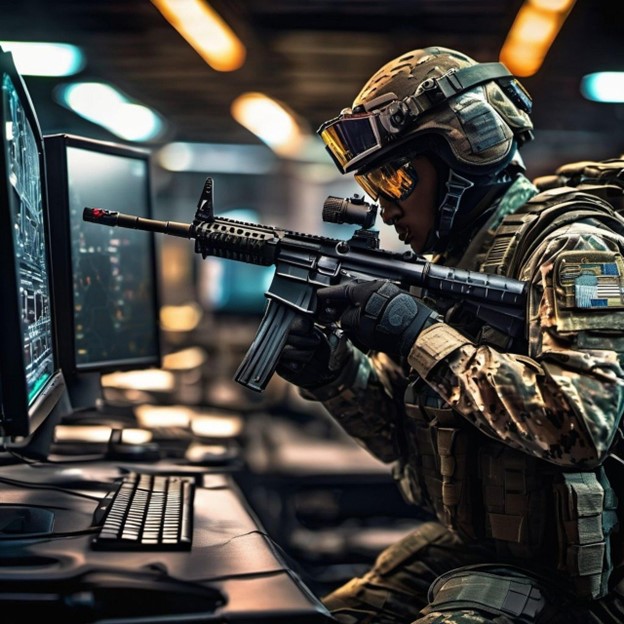
Will the U.S. and Iran enter into a cyberwar? Tech expert Julio Rivera discusses that. In the second half of the program, Judge John Wilson (ret.) reviews the latest lawfare attacks on Donald Trump. If you missed the show on your local station, catch it here. https://rumble.com/v5dnndx-the-american-political-zone-september-3-2024.html

In 2022, Bishop Garrison, the senior advisor to the secretary of defense for human capital and diversity, equity and inclusion. said the “need for diversity, equity and inclusion should be a consideration or a part of all decisions in the military.”
A Tampa Free Press story notes that he U.S. military and Pentagon have turned into a “vast DEI bureaucracy under the Biden administration. The Biden administration has spent hundreds of millions of dollars on diversity, equity and inclusion (DEI) initiatives…since President Joe Biden took office in January 2021.”
The report is based on an Arizona University study which stated “The sole purpose of the U.S. Armed Forces is to defend the nation against its external enemies. The service academies train officers committed to fulfilling this mission. This mission—defense of the nation—makes the U.S. Armed Forces arguably the most important institution in the United States…Given its importance, the U.S. Armed Forces should not be a laboratory for social experimentation, especially one based on Critical Race Theory, a contentious and abstract social theory. Yet, as this Commission Report on Civic Education in the Military shows in great detail, Critical Race Theory is promoted within Diversity, Equity, and Inclusion (DEI) training throughout the military from the Pentagon through the ranks and in our service academies. Critical Race Theory is based on an assumption that no matter what progress is made on ensuring equal rights for minorities, ‘white privilege’ and ‘sub-conscious’ racism continues to prevail among whites, no matter their professed support for diversity and inclusion in their workplace, community, or immediate and extended families. Critical Race Theory assumes that racism is systemic from the very founding of the United States and that the U.S. Constitution was drafted to ensure the white privilege of slaveholders. Whatever the appearance of progress—constitutional amendments and legislation to protect equal rights for racial minorities—is a façade that still preserves white privilege. Critical Race Theory is based on assumptions, not empirically derived evidence, and is by nature divisive. Diversity, Equity, and Inclusion programs, which rely on Critical Race Theory, should not be seen as workplace sensitivity training.”
Its not only about DEI. In a press release issued on June 12, The Department of Defense Announced “Environmental Justice Listening Sessions…to solicit input from the public on its environmental justice (EJ) strategy. DOD is updating its EJ Strategy in accordance with Executive Order (E.O.) 14096, Revitalizing Our Nation’s Commitment to Environmental Justice for All, and to pursue a whole-of-government approach to advancing EJ.” 14096 was issued by Biden in 2023.
A 2022 Federal Times study, using data from a Reagan National Defense survey, disclosed that the actions of some presidents have predominantly caused the perception that the Defense Department is overly politicized.
Breitbart reports that “The vast majority of U.S. active duty military members believe the Pentagon has become politicized, according to data obtained exclusively by Breitbart News. Sixty-eight percent of active duty members say they have ‘witnessed a growing politicization,’ while 53 percent say the military has become ’too politicized.’ Sixty-eight percent also say such politicization would impact their decision to encourage their children to join the military.”
The politicization comes at a substantial cost. A National Review article reported that “The Department of Defense wants taxpayers to foot a $114 million bill for its ‘diversity, equity, inclusion, and accessibility’ programs. The FY 2024 President’s Budget request demonstrates the DoD’s commitment to DEIA and includes $114.7 million for dedicated diversity and inclusion activities.”
The cost of politicization is also seen in discouraging enlistment in the military. In 2023, the military fell short of its recruitment goal by an astounding 41,000. A Military Times report stated that “One possibility [for missing recruitment goals] that is increasingly resonating with veterans is that the military is too ‘woke.’ Sen. Tommy Tuberville, R-Ala., for example, is among a group of Republican senators who have repeatedly blamed recruiting problems on the Biden administration for trying to build a ‘woke Army.’”
Photo: Dept. of Defense
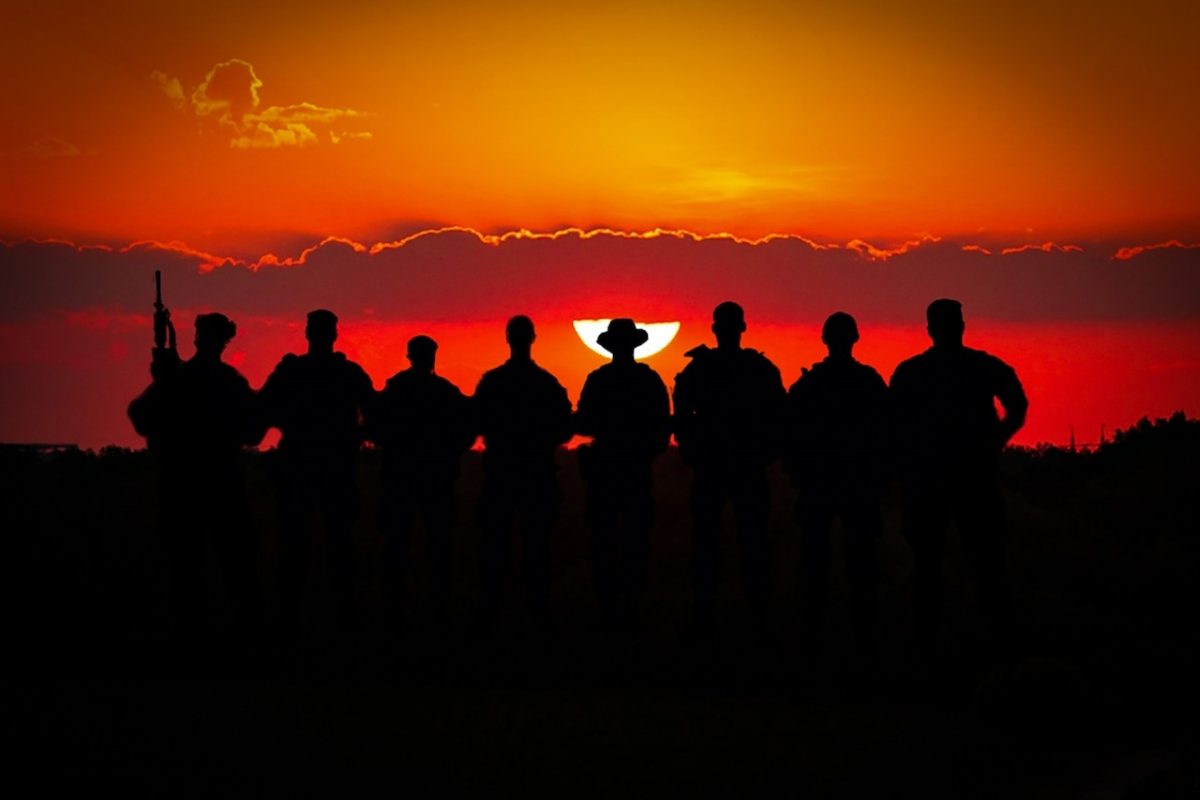
The mission of the Department of Defense is to defend the nation. The pride of the American military is its history of not getting involved in domestic politics.
Its vital role of discouraging enemies from attacking the U.S. has been fulfilled so far, despite budget challenges. However, many both within and close to the military correctly perceive the armed forces as being focused on and distracted by issues and programs unrelated to its mission.
The issue arose to prominence during the Obama and Biden Administrations. A 2013 Investors article noted that Obama cleansed the military of any officer suspected of “disloyalty to or disagreement with the administration on matters… An important example includes relieving General Carter Ham, who was dismissed as head of U.S. Africa Command after only a year and a half because he disagreed with orders not to mount a rescue mission in response to the Sept. 11, 2012, attack in Benghazi. In addition, Rear Adm. Chuck Gaouette, commander of the John C. Stennis Carrier Strike Group, was relieved in October 2012 for disobeying orders when he sent his group on Sept. 11 to ‘assist and provide intelligence for’military forces ordered into action by Gen. Ham. Other removals include the sacking of two nuclear commanders in a single week — Maj. Gen. Michael Carey, head of the 20th Air Force, responsible for the three wings that maintain control of the 450 intercontinental ballistic missiles, and Vice Adm. Tim Giardina, the No. 2 officer at U.S. Strategic Command.”
Breitbart listed at least 197 officers relieved of duty by President Obama “for a laundry list of reasons and sometimes with no reason given….” According to Retired U.S. Army Maj. Gen. Paul Vallely, who stated that “He’s (Obama) [is] intentionally weakening and gutting our military, [the] Pentagon and reducing us as a superpower, and anyone in the ranks who disagrees or speaks out is being purged’.”
The controversy continues under the Biden Administration, with a focus on distracting the services from their core defense mission with unrelated priorities.
Almost immediately after taking office, President Biden focused on emphasizing DEI in the military.
In January 2021, President Biden signed multiple Executive Orders (E.O.) to advance equity across multiple focus areas:
• E.O. 13985, Advancing Racial Equity and Support for Underserved Communities Through the Federal Government, January 20, 2021, calls on Federal and DoD agencies to advance equity through identifying and addressing barriers to equal opportunity that underserved communities may face.
• E.O. 13988, Preventing and Combating Discrimination on the Basis of Gender – Identity or Sexual Orientation, January 20, 2021, which emphasizes the need to prevent and combat discrimination based on gender identity or sexual orientation and fully enforce Title VII and other laws that prohibit discrimination based on gender identity or sexual orientation.
• E.O. 14004, Enabling All Qualified Americans to Serve Their Country in Uniform, January 25, 2021, advances policy that all transgender individuals who wish to serve in the U.S. military and who meet the appropriate standards shall be able to do so openly and free from discrimination.
On June 25, 2021, President Biden issued E.O. 14035 (Diversity, Equity, Inclusion, and Accessibility in the Federal Workforce), which promotes “the vital role DEIA plays in cultivating a workforce needed to mitigate the threats of tomorrow. Consistent with the government-wide priority for each agency to provide DEIA leadership at the senior-most level, DoD appointed the Under Secretary of Defense for Personnel and Readiness as the Chief Diversity and Inclusion Officer (CDIO) who will provide cohesive oversight and integration for DEIA efforts. Increased cohesion and integration allows the Department to strategically approach DEIA beyond the traditional focal areas of demographic representation to better achieve DoD’s broader mission of providing the forces necessary to secure the nation.”
The article concludes tomorrow
Photo: Dept. of Defense